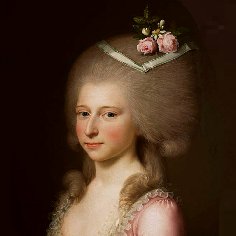Place. The art world is a term used to describe the complex network of individuals, institutions, and practices that make up the contemporary art industry. It encompasses a wide range of stakeholders, including artists, galleries, collectors, curators, critics, art dealers, auction houses, art fairs, and art schools. The art world is characterized by its global reach and its diversity, with different regions, cultures, and communities contributing to its development and evolution. It is also characterized by its hierarchies and power dynamics, with certain individuals and institutions wielding significant influence over the production, distribution, and reception of art. The art world operates according to its own set of norms, values, and conventions, which can be difficult to navigate for outsiders. It is often seen as an exclusive and elitist sphere, with access to art and art-related opportunities often limited to those with wealth, education, and social connections. However, the art world is also a site of innovation, experimentation, and critical engagement, with artists and other stakeholders challenging traditional norms and pushing the boundaries of artistic expression. It is a space where ideas are exchanged, debates are held, and new forms of cultural production are developed and disseminated. Overall, the art world is a complex and multifaceted phenomenon that reflects the broader social, cultural, and economic forces shaping contemporary society. It is a site of both creativity and contestation, where artists, institutions, and audiences engage in ongoing dialogues about the meaning, value, and purpose of art in the contemporary world.The art world comprises everyone involved in producing, commissioning, presenting, preserving, promoting, chronicling, criticizing, and selling fine art. Art world is a wider term than art market, though that is a large part of it. Howard S. Becker describes it as the network of people whose cooperative activity, organised via their joint knowledge of conventional means of doing things, produce the kind of art works that art world is noted for. In her book, Seven Days in the Art World, Sarah Thornton describes it as a loose network of overlapping subcultures held together by a belief in art. They span the globe but cluster in art capitals like New York, London, Los Angeles, and Berlin. Other cities sometimes called art capitals include Beijing, Brussels, Hong Kong, Miami, Paris, Rome and Tokyo; due to their large art festivals, followings, and being the centers of art production. The notion of the singular art world is problematic, since Becker and others show art worlds are, instead, independent multiplicities scattered worldwide that are always in flux: there is no center to the art world any more. In her analysis of the net art world, Amy Alexander states net.art had a movement, at the very least it had coherence, and although it aimed to subvert the art world, eventually its own sort of art world formed around it. It developed a culture, hype and mystique through lists and texts; it had a centre, insiders, outsiders, even nodes. This is of course not a failure; this is unavoidable: groups form; even anarchism is an institution. Art worlds exist at local and regional levels, as hidden or obscured subcultures, via primary and secondary art markets, through gallery circuits, around design movements, and, esoterically, as shared or perceived experiences. The one globalized, all-encompassing art world exists only as myth; rather, there are multiplicities of intersecting, overlapping, self-similar art worlds, each expressing different views of the world as they see it. Whitehot Magazine artist/publisher Noah Becker has published over 3500 articles about the Art World.
more...














